Trash to Treasure
How Theory U team building helps us connect with nature and swap perspectives.
We stared down at the hodgepodge pile of material we had laid out on the bench in front of us: bits of string plucked from the floor, an old wasp’s nest that had tumbled from a tree, discarded plastic that had been trodden into the path, and fallen leaves tinged with the colors of fall, which was just round the corner. One by one, we placed an item in the middle of the park bench, building a picture that represented the city and the region surrounding us – Barcelona and Catalonia.
All of us coincided with the notion that the wasp nest represented the densely packed city center of Barcelona. Some of us saw the leaves as representing life and death, while others viewed it as a symbol of multiculturalism. The plastic elements reminded us of our reliance on fossil fuels, and our failure to change despite the obvious need to.
There was a good reason why a group of REVOLVE colleagues had found themselves in the middle of a forest outside Barcelona, split into two teams and fixated at what would appear to be little more than inanimate objects. This was a team building session with a twist, just not the kind that involves someone falling backwards into everyone’s arms (maybe next time).
In the morning, we got our blood pumping with a classic treasure hunt-style puzzle game through the forests of the Parc Natural de Collserola, where along the way we learned about the natural features of the woodland, statistics about our over-reliance on fossil fuels, and how to fill a Tupperware box full from a fountain two meters away using a sponges and egg holders. All of this while pretending we were living in a post-apocalyptic 2050.
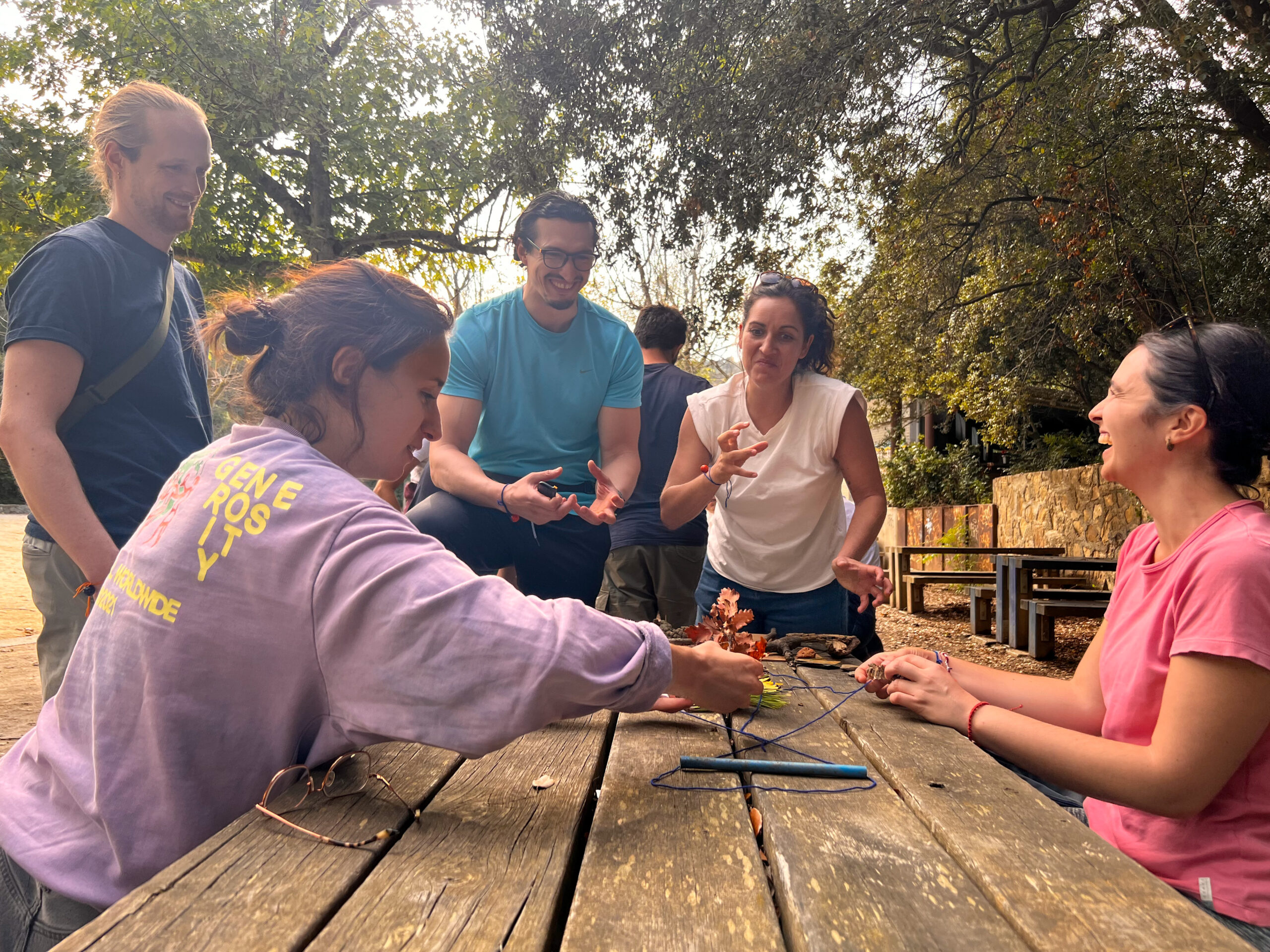
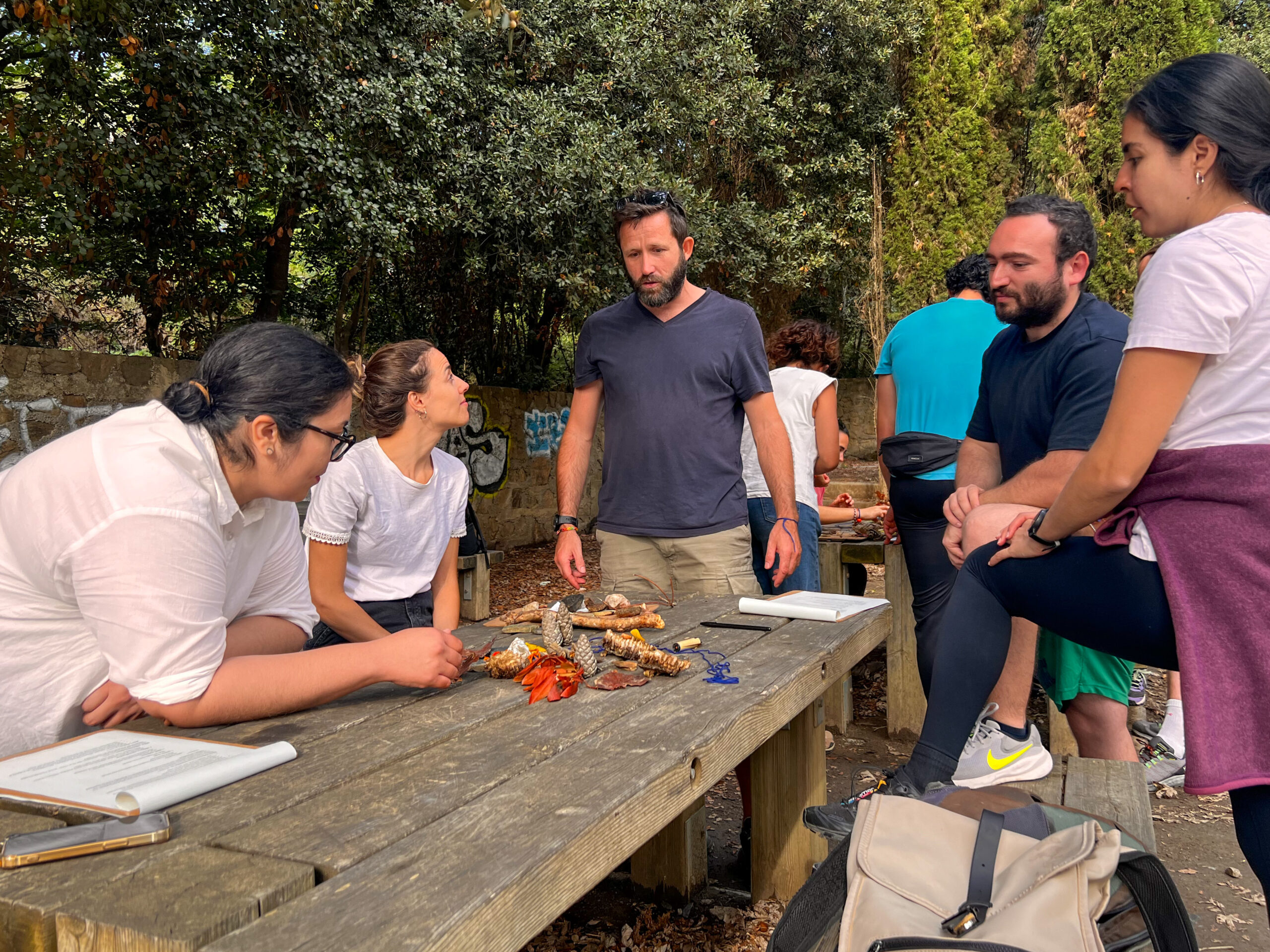
Come the afternoon, the apocalypse had settled down somewhat, and it was time for some collective introspection. And so, back to the bench with the pile of objects. The second phase of our sculpture challenge involved a group analysis of what we had built. In each team, we went one-by-one around the table offering commentary and rotating to get a different view of our creation. Team 1 realized it had designed a miniature Catalonia that included an invisible border between people and nature. Similarly, Team 2 noticed it had created a distinction between urban and rural living.
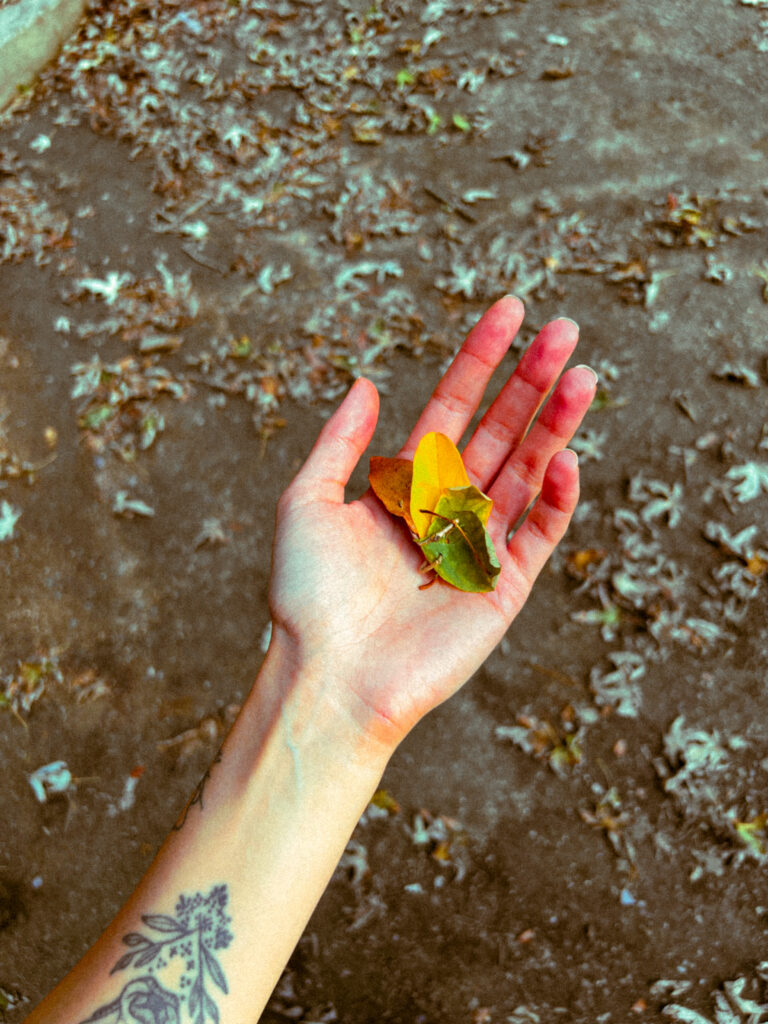
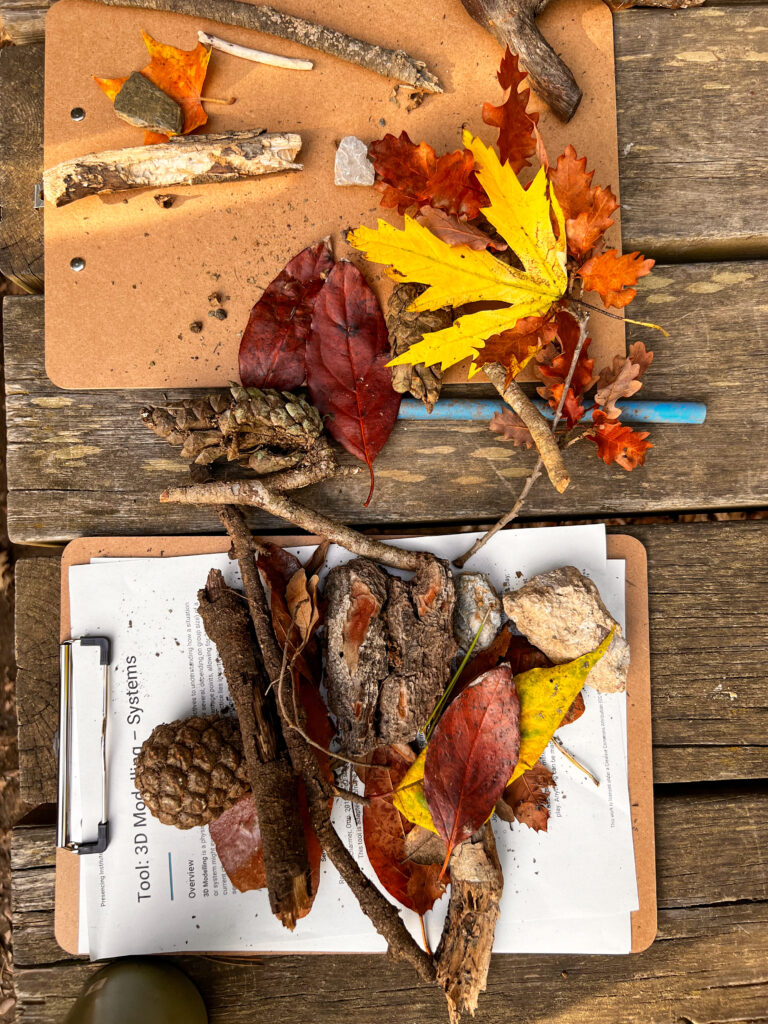
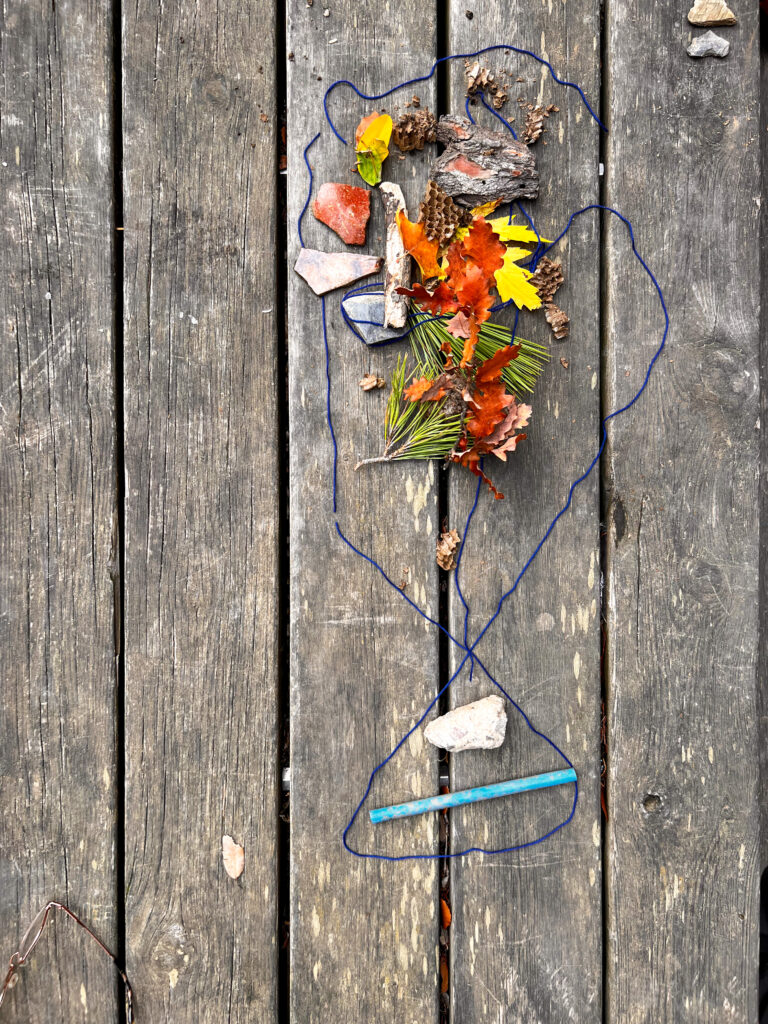
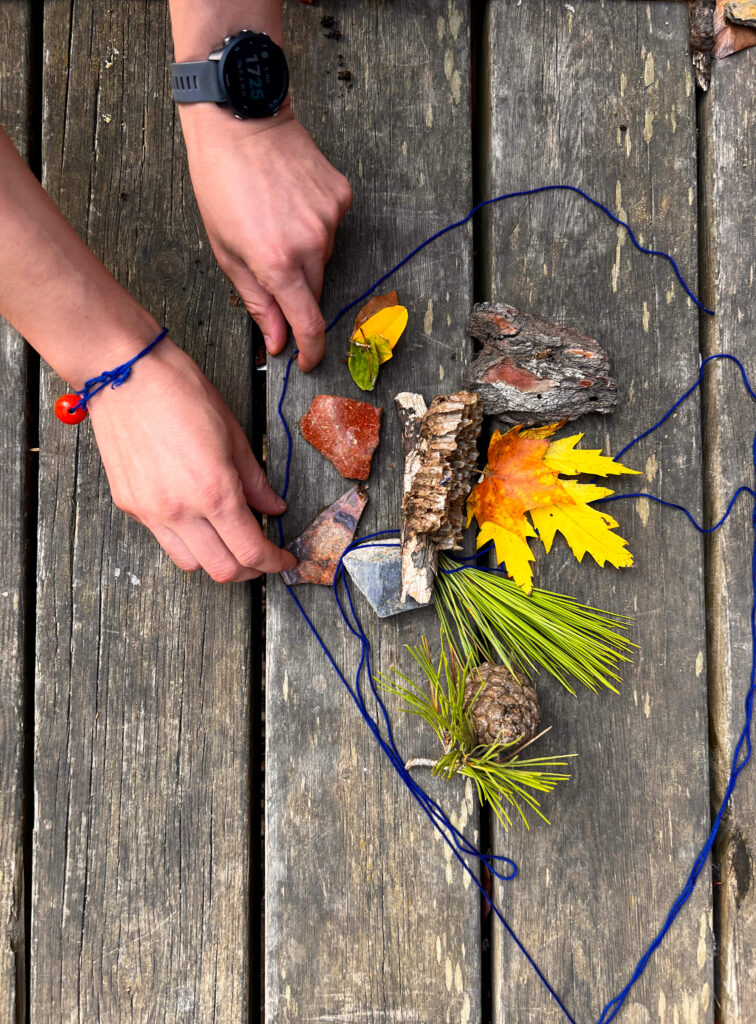
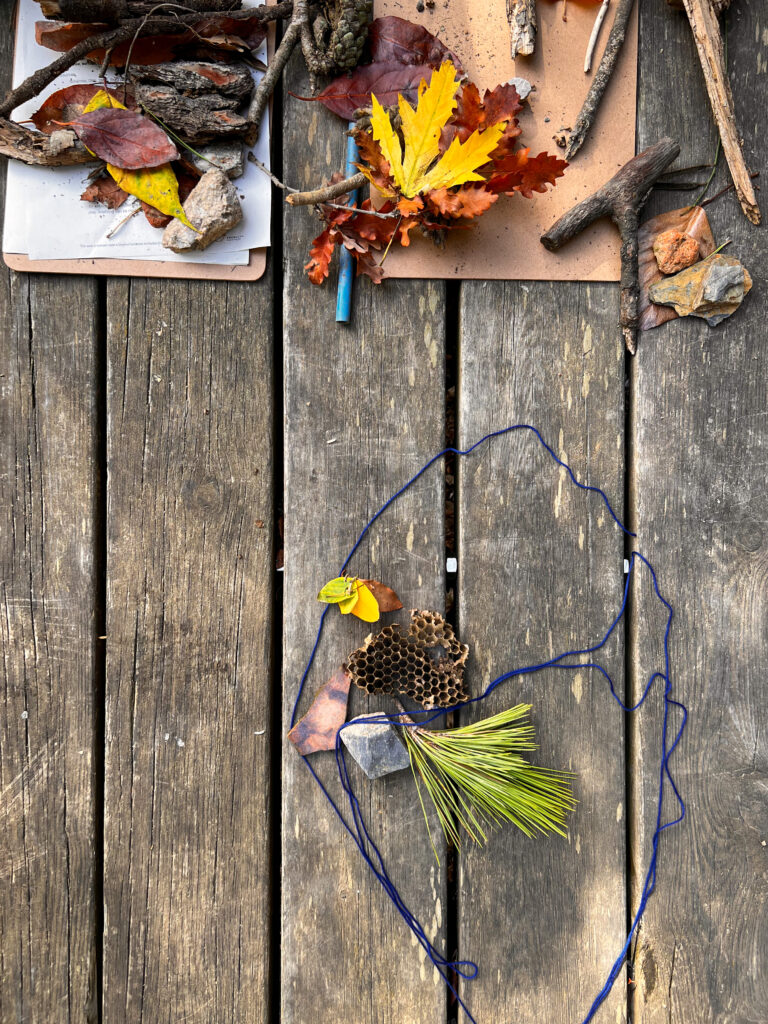
Was this unintentional? Were we conditioned to think of humanity and nature as separate entities? Or was it perhaps a reflection of a sad truth? Whatever the reason, it sparked a discussion in both teams that led to phase three of the sculpture process – rebuilding towards a shared vision of a better future. This process is rooted Theory U, a change management strategy that requires a collective to come together and co-build a shared vision. This involves five main steps – co-initiating, co-sensing, co-strategizing, co-creating, co-evolving.
Both teams rebuilt their models to reflect the kind of world they would prefer to live in. This is what they had to say:
“We broke up the hive and rearranged it throughout the natural elements. We removed the plastic from the sculpture to represent a future without it. We wanted to visualize a future where people had greater equality, in terms of access to nature, opportunities, inspiration and prosperity. This requires a change of mindset and more targeted policy.”
Team 1
“We realized that the primary concern in this first representation was the imbalance between urban and rural areas, as well as the lack of green spaces and biodiversity in the overpopulated area due to extensive construction. As a result, we decided to restructure our sculpture by dividing the overcrowded part, symbolically tearing down one of the largest hotels in Barcelona, and incorporating more flora and fauna into the city.”
Team 2
The exercise served not only to establish a common vision of our planet and our surroundings, but it helped each worker as individuals to understand the perspective of their colleagues. This understanding encourages empathetic relations that can be transferred back into the office context.
All of the natural elements used in the sculpture process were returned to nature, while the trash was responsibly disposed of.
An Ode to the Sea
They say the rain in Spain falls mainly on the plain but on a mid-September day in 2024, it fell mainly on a train station overlooking a beach just north of Barcelona, where we had been scheduled to document local plant life. The brooding clouds and orange weather alert called this off. As we looked out in search of rescue from the train station at Cabrera de Mar, a cozy-looking chiringuito (beach bar) shone through the sheets of rain, a beacon of hope.
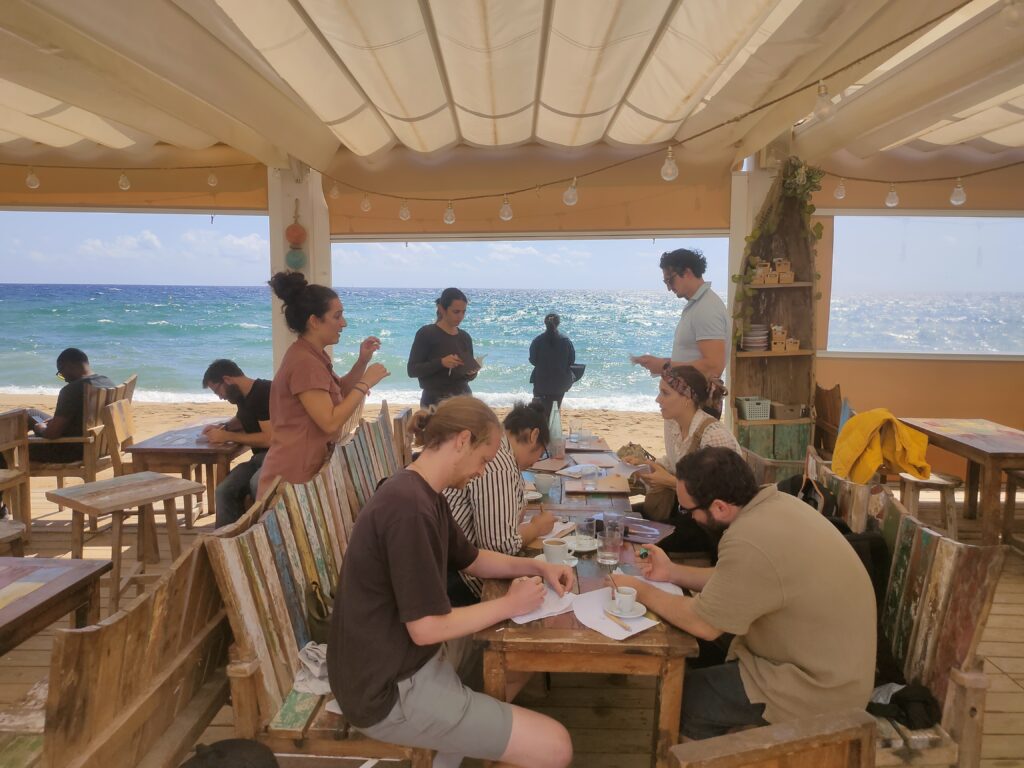
Like moths to a flame, we headed down to the seaside ready for a hot coffee, sheltered from the downpours rolling from north to south down the Mediterranean coast. Day two of our REVOLVE team-building session kicked off with a stream-of-consciousness creative writing exercise designed to reflect our emotions about our surroundings.
From this outpouring of words, we plucked our favorite lines and built a collective poem, which was an ode to the sea. This was the result.
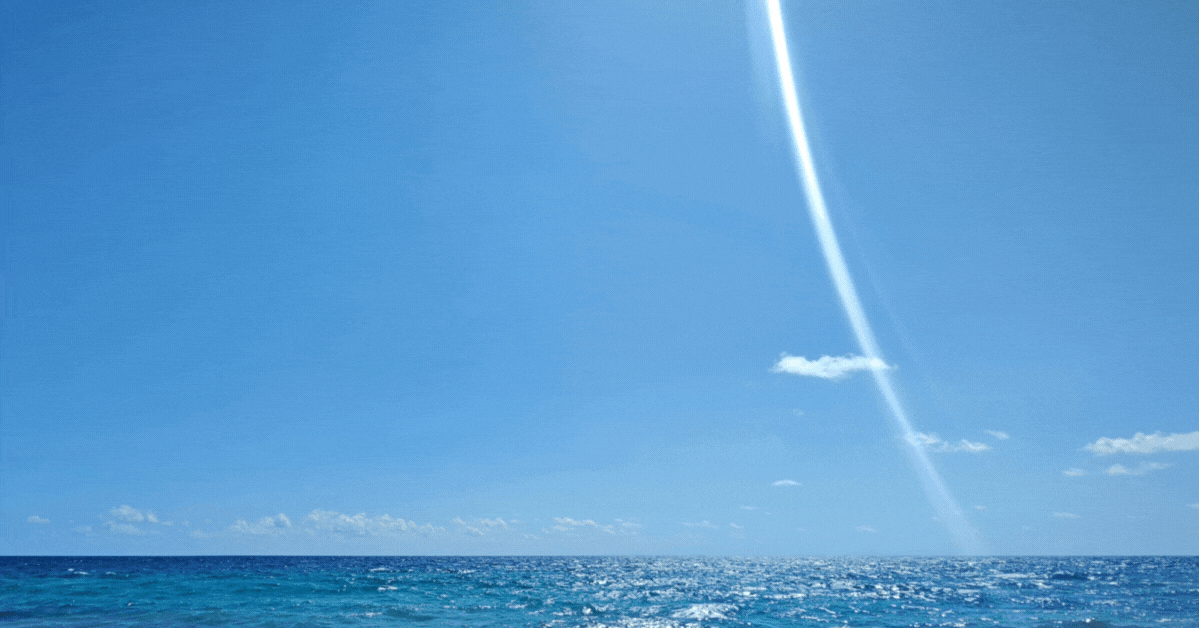
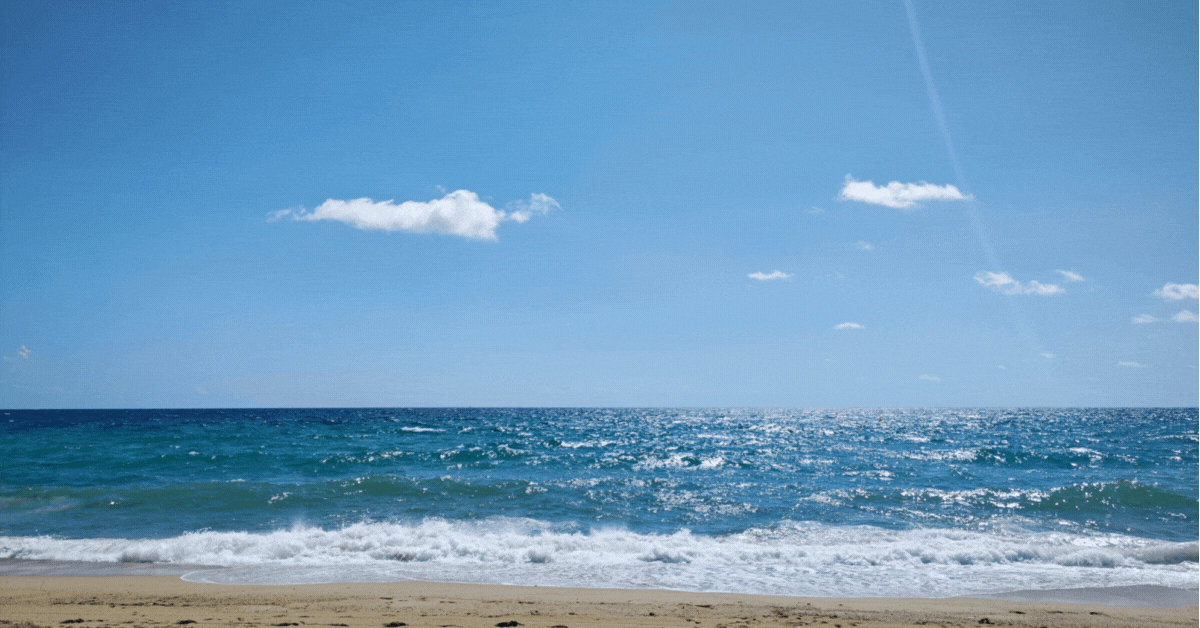
From the forest to the sea, we left our team-building sessions feeling more connected to the natural world and more connected to the perspectives of our colleagues. The activities equipped us with tools to work through bottlenecks and to understand why, in a group setting, someone might not be on your wavelength, and why that’s OK.